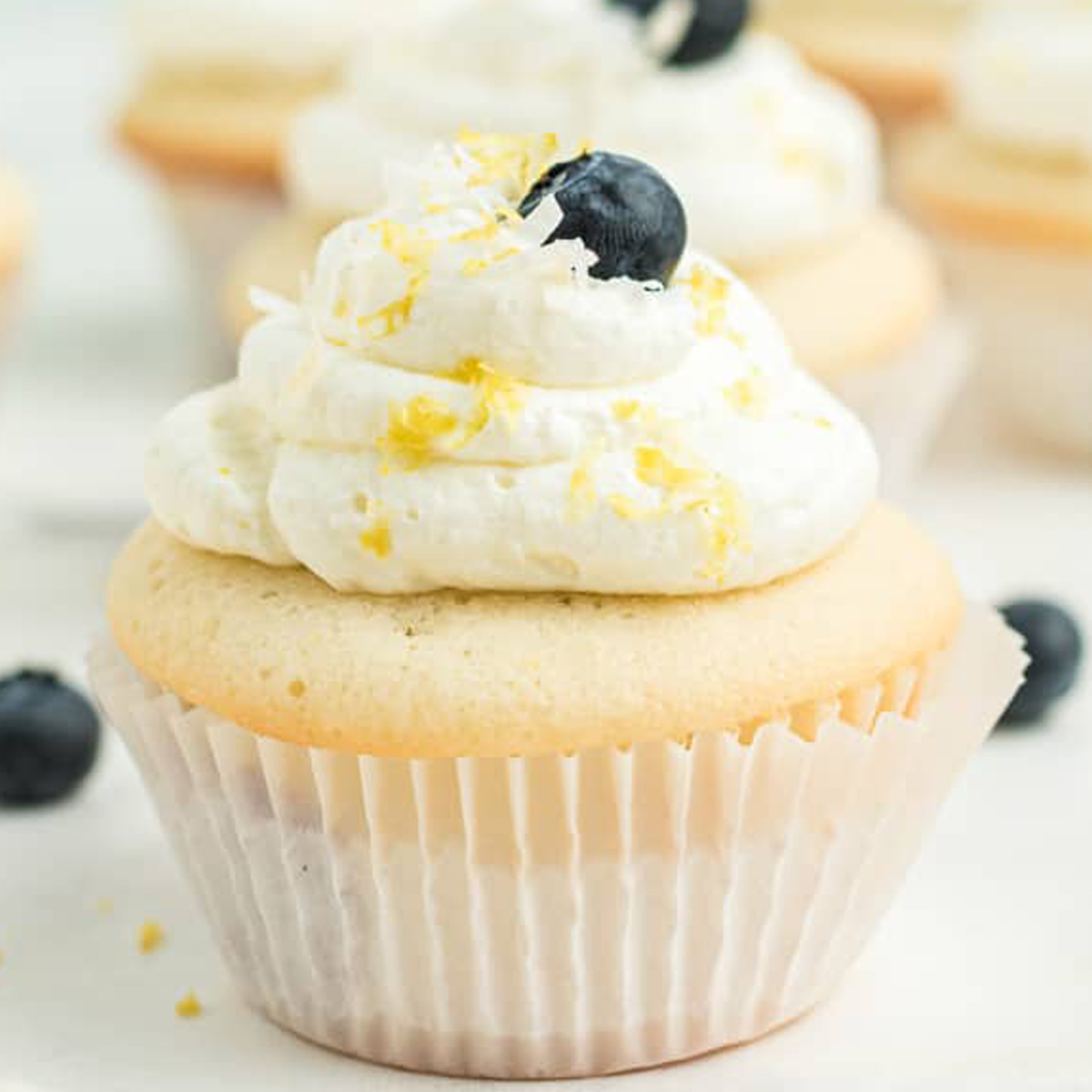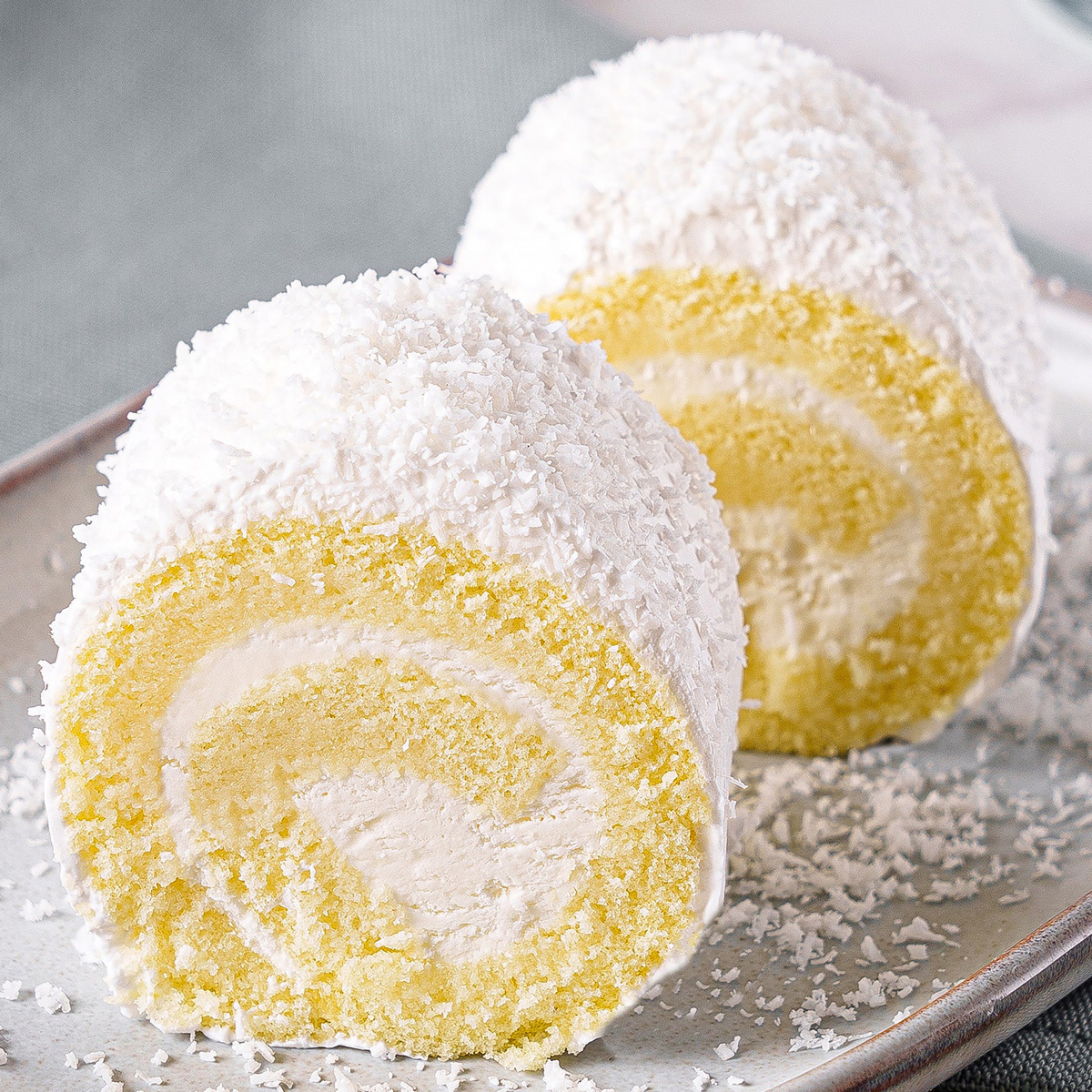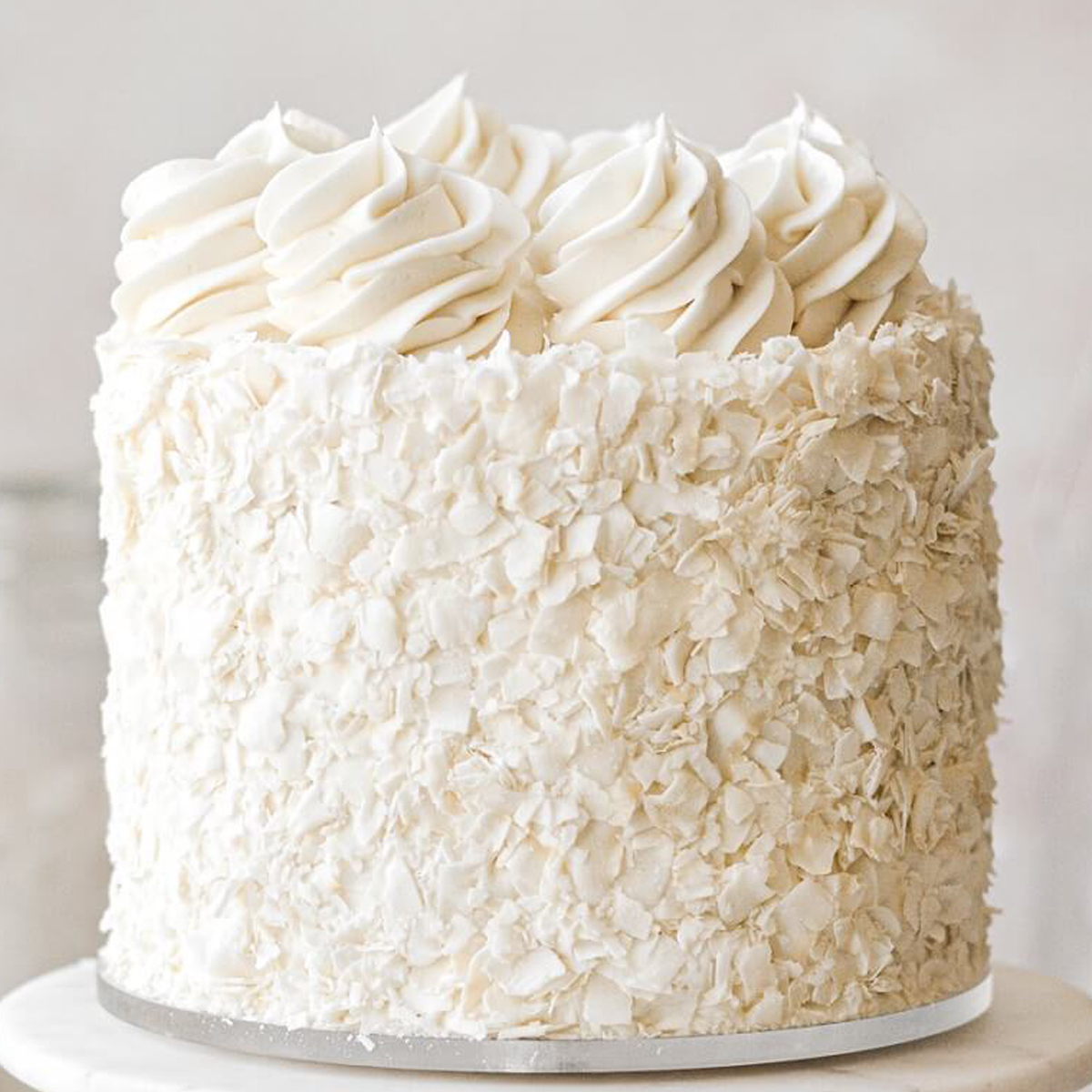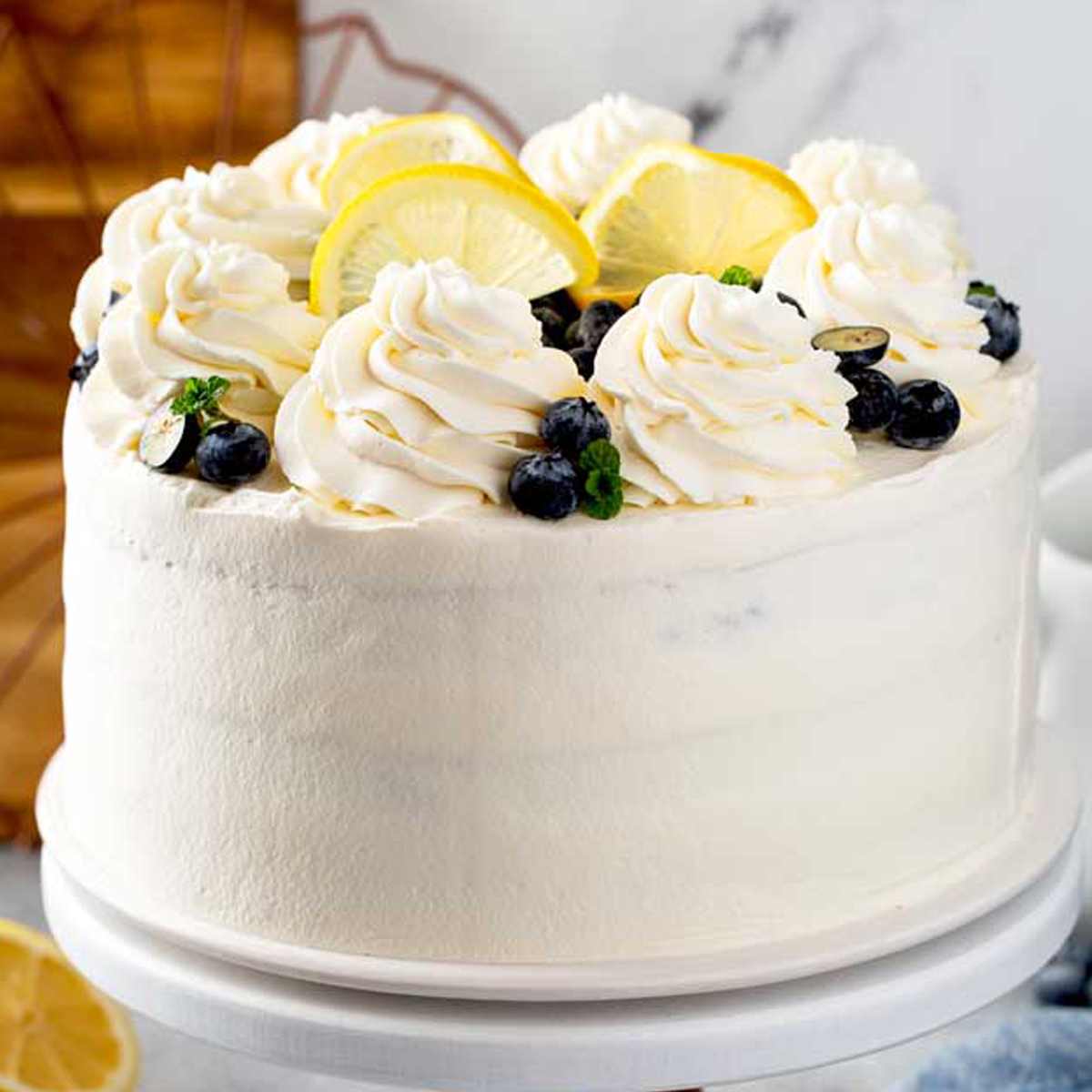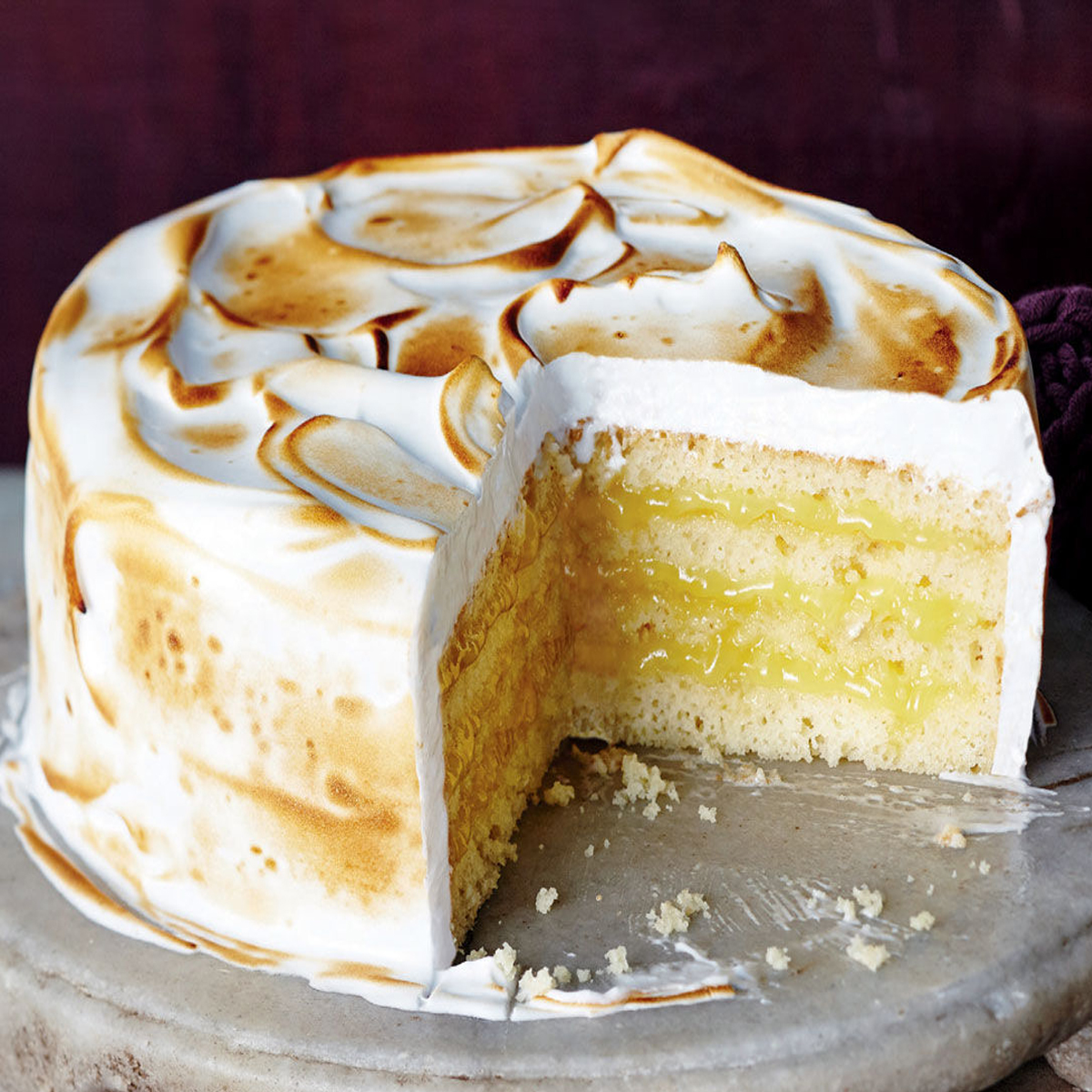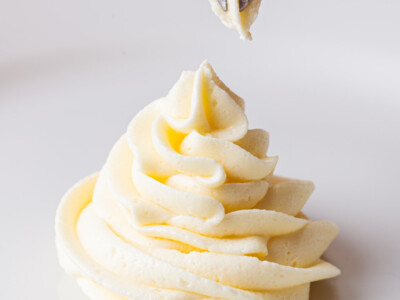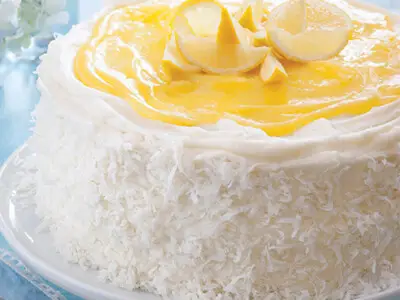The Best Fluffy Pancakes recipe you will fall in love with. Full of tips and tricks to help you make the best pancakes.
Tropical Bliss Coconut Cake
Coconut Cake is a tropical-inspired dessert that captures the essence of the exotic coconut palm tree. This delightful confection is known for its sweet, moist, and fluffy layers, which are infused with the rich and aromatic flavor of coconut. Whether adorned with creamy coconut frosting, coconut shavings, or toasted coconut flakes, this cake offers a delightful taste of paradise in every bite. With its irresistible combination of tender cake layers and the natural sweetness of coconut, Coconut Cake has become a beloved treat for celebrations, gatherings, or simply as a well-deserved indulgence. In this introduction, we’ll explore the allure of Coconut Cake and the reasons it has become a favorite among dessert enthusiasts around the world.

What is Coconut Cake?
Coconut Cake is a delectable dessert made with coconut as its primary flavoring and main ingredient. This cake typically consists of several moist and tender layers of coconut-flavored cake, which are often infused with coconut milk or shredded coconut. In addition to the coconut-infused cake layers, Coconut Cake is known for its creamy and luscious coconut frosting, which can be made from various combinations of coconut cream, coconut milk, butter, and powdered sugar.
Coconut Cake can vary in complexity and presentation, ranging from a simple single-layer cake with coconut frosting to more elaborate creations featuring multiple layers, fillings, and decorative elements. It is not uncommon to find Coconut Cakes adorned with toasted coconut flakes, shredded coconut, or additional coconut cream for a rich and tropical flavor profile.
This dessert is loved for its tropical, sweet, and nutty flavor, making it a popular choice for various occasions, including birthdays, weddings, and holiday celebrations. Its versatility allows for creative variations, such as adding fruit fillings, incorporating chocolate, or infusing different extracts to customize the flavor. Coconut Cake embodies the essence of coconut, offering a taste of the tropics in every delightful bite.

Why you will love Coconut Cake?
There are numerous reasons why you’ll likely fall in love with Coconut Cake:
- Tropical Paradise in a Bite: Coconut Cake captures the essence of the tropics with its rich and aromatic coconut flavor. Each bite is like a mini vacation to a sunny, palm-fringed beach.
- Moist and Tender Layers: The cake layers in Coconut Cake are incredibly moist and tender, thanks to the use of coconut milk or shredded coconut in the batter. This creates a luxurious texture that’s pure indulgence.
- Creamy Coconut Frosting: The creamy and luscious coconut frosting that typically crowns the cake is a coconut lover’s dream. It’s rich, sweet, and beautifully complements the cake’s flavor and texture.
- Versatile Presentation: Coconut Cake can be as simple or as elaborate as you desire. You can enjoy it as a single-layer cake with a light glaze or go all out with multiple layers, fillings, and decorative coconut shavings.
- Customizable Flavors: While coconut is the star, Coconut Cake can be customized with other flavors and fillings, such as chocolate, fruit, or various extracts. This versatility allows you to tailor the cake to your taste preferences.
- Ideal for Celebrations: Coconut Cake is a popular choice for special occasions, including weddings, birthdays, and holidays. Its elegance and tropical flair make it a delightful centerpiece for celebrations.
- Pairing Possibilities: It pairs exceptionally well with a variety of beverages, such as coffee, tea, or even a glass of coconut milk for an extra coconut-infused experience.
- Eye-Catching Appearance: Coconut Cake’s snowy white appearance, often adorned with toasted coconut flakes or decorative elements, makes it visually appealing and perfect for Instagram-worthy moments.
- Comfort Food: The warm, nutty, and sweet flavors of Coconut Cake can evoke feelings of comfort and nostalgia. It’s a dessert that brings people together and leaves them with smiles.
- Impressively Light and Decadent: Despite its rich flavor, Coconut Cake maintains a delightful lightness that makes it suitable for any occasion or as a sweet escape any day of the year.
In essence, Coconut Cake is a tropical delight that combines exquisite flavors, an inviting texture, and endless customization possibilities. Its appeal extends beyond coconut enthusiasts, as it has a unique ability to transport your taste buds to a sun-soaked paradise with each and every bite.

Coconut Cake Recipe
Ingredients:
For the Cake:
- 2 3/4 cups (330g) all-purpose flour
- 1 1/2 teaspoons baking powder
- 1/2 teaspoon baking soda
- 1/2 teaspoon salt
- 1 1/2 cups (300g) granulated sugar
- 3/4 cup (170g) unsalted butter, softened
- 3 large eggs, room temperature
- 1 teaspoon pure vanilla extract
- 1 teaspoon coconut extract (optional)
- 1 1/2 cups (360ml) full-fat coconut milk
- 1/2 cup (40g) shredded coconut (sweetened or unsweetened, as desired)
For the Coconut Frosting:
- 1 1/2 cups (340g) unsalted butter, softened
- 6 cups (720g) powdered sugar
- 1/4 cup (60ml) coconut milk
- 1 teaspoon pure vanilla extract
- 1/2 teaspoon coconut extract (optional)
- 1 1/2 cups (120g) shredded coconut (sweetened or unsweetened, for decorating)
Instructions:
For the Cake:
- Preheat your oven to 350°F (175°C). Grease and flour three 8-inch (20 cm) round cake pans and line the bottoms with parchment paper.
- In a medium bowl, whisk together the flour, baking powder, baking soda, and salt. Set aside.
- In a large mixing bowl, cream together the softened butter and granulated sugar until light and fluffy, about 2-3 minutes.
- Add the eggs one at a time, beating well after each addition. Stir in the vanilla extract and coconut extract, if using.
- Gradually add the dry ingredients to the wet ingredients, alternating with the coconut milk, beginning and ending with the dry ingredients. Mix until just combined.
- Gently fold in the shredded coconut.
- Divide the batter evenly among the prepared cake pans and smooth the tops.
- Bake in the preheated oven for 25-30 minutes or until a toothpick inserted into the center of the cakes comes out clean. Allow the cakes to cool in the pans for about 10 minutes before transferring them to a wire rack to cool completely.
For the Coconut Frosting:
- In a large mixing bowl, beat the softened butter until creamy and smooth.
- Gradually add the powdered sugar, one cup at a time, mixing well after each addition.
- Stir in the coconut milk, vanilla extract, and coconut extract, if using. Beat until the frosting is smooth and fluffy.
Assembling the Cake:
- Place one cake layer on a serving platter. Spread a layer of frosting on top. Repeat with the remaining cake layers, stacking them on top of each other.
- Frost the sides and top of the cake with the remaining coconut frosting.
- Sprinkle the shredded coconut over the top and sides of the cake for decoration.
- Refrigerate the cake for at least an hour before serving to allow the flavors to meld together.
- Slice and serve your delicious homemade Coconut Cake!
Enjoy your Coconut Cake with its moist, coconut-infused layers and creamy frosting!

How to serve Coconut Cake
Serving Coconut Cake is a delightful experience, and here’s how to do it in a way that enhances its tropical flavors and presentation:
1. Slice the Cake: Use a sharp serrated knife or a cake slicer to cut clean and even slices of the Coconut Cake. You can cut individual portions or larger slices, depending on your preference and the occasion.
2. Use a Cake Server: A cake server or cake spatula is a handy tool for lifting and transferring each slice onto a dessert plate. This helps maintain the cake’s structure and appearance.
3. Garnish with Coconut: Enhance the tropical theme by garnishing each slice with additional shredded coconut or toasted coconut flakes. This adds texture and highlights the coconut flavor.
4. Fresh Berries: Serve Coconut Cake with a side of fresh berries such as strawberries, raspberries, or blueberries. The fruity sweetness pairs wonderfully with the cake’s richness.
5. Whipped Cream: A dollop of freshly whipped cream on the side of each cake slice adds a light and airy contrast to the cake’s sweetness. Coconut-flavored whipped cream can be an extra treat.
6. Tropical Fruits: Consider adding slices of tropical fruits like pineapple or kiwi to the plate. Their bright and juicy flavors complement the coconut.
7. Coconut Ice Cream: For an extra dose of coconut, serve the cake with a scoop of coconut-flavored ice cream. It’s a creamy and refreshing pairing.
8. Drizzle with Coconut Syrup: You can create a simple coconut syrup by mixing coconut milk with a bit of powdered sugar. Drizzle this lightly over each cake slice for an extra burst of coconut flavor.
9. Tea or Coffee: Coconut Cake pairs well with a variety of beverages, such as a cup of black tea or a freshly brewed pot of coffee. The subtle coconut notes are a lovely complement to warm drinks.
10. Presentation: Pay attention to the presentation on the dessert plate. Arrange the cake slice and accompanying garnishes with care, creating an inviting and appealing presentation.
11. Enjoy Slowly: Encourage your guests to savor each bite of Coconut Cake. Its tropical flavors and rich texture are best appreciated when enjoyed slowly and savored.
Whether you’re serving Coconut Cake at a summer picnic, a birthday celebration, or as a special treat for family and friends, these serving suggestions will enhance the experience and make your Coconut Cake a memorable dessert.

How to store Coconut Cake
Proper storage is essential to maintain the freshness and quality of your Coconut Cake. Here’s how to store it:
1. Room Temperature (Short Term): If you plan to consume the Coconut Cake within a day or two, you can store it at room temperature, tightly covered with a cake dome or plastic wrap. Make sure it’s placed in a cool, dry place away from direct sunlight and heat sources.
2. Refrigeration (Longer Term): For longer storage, refrigeration is recommended. Follow these steps for refrigeration:
- Allow the cake to cool completely before storing.
- Place the cake on a cake plate or in an airtight container to prevent it from absorbing odors from the refrigerator.
- Cover the cake with plastic wrap or foil to keep it moist.
- Refrigerate the cake for up to 3-4 days. After this time, the cake may start to lose its freshness.
3. Freezing (Extended Storage): If you want to store Coconut Cake for an extended period, freezing is an option. To freeze Coconut Cake:
- Allow the cake to cool completely.
- Wrap the cake tightly in plastic wrap or aluminum foil to seal out air.
- Place the wrapped cake in an airtight container or a resealable freezer bag for additional protection.
- Label the container or bag with the date to keep track of its freshness.
Coconut Cake can be frozen for up to 2-3 months without significant loss of quality. When you’re ready to enjoy it, remove the cake from the freezer, thaw it in the refrigerator for several hours or overnight, and bring it to room temperature before serving.
Note: Be cautious when thawing Coconut Cake, as it can become soggy if left at room temperature for too long. Thawing in the refrigerator is the safest method.
Properly stored Coconut Cake should maintain its delightful texture and flavor, allowing you to enjoy it over an extended period or whenever you’re in the mood for a tropical dessert.
You Might Also Like These Recipes
- Unveiling The Magic Of Lemon Coconut Cake
- Tropical Twist Blueberry Coconut Cupcakes
- The Ultimate Coconut Roll Cake
- Coconut Velvet Cake: A Tropical Symphony
Tips to make perfect Coconut Cake
Creating the perfect Coconut Cake requires attention to detail and some specific techniques. Here are tips to help you achieve a flawless Coconut Cake:
1. Use High-Quality Ingredients:
- Start with fresh, high-quality ingredients. Opt for real coconut milk or cream and use fresh shredded coconut when possible for the best flavor.
2. Properly Measure Ingredients:
- Use a kitchen scale for precise measurements, especially for flour and sugar. Accurate measurements are crucial for the cake’s texture.
3. Room Temperature Ingredients:
- Ensure that eggs, egg yolks, and any dairy or liquid ingredients are at room temperature. This promotes better incorporation and a smoother batter.
4. Cream the Butter and Sugar:
- Creaming the softened butter and sugar together until light and fluffy is essential. This incorporates air into the batter, resulting in a tender crumb.
5. Gradual Egg Addition:
- Add the eggs one at a time, beating well after each addition. This ensures even distribution and a smoother batter.
6. Use Coconut Extract:
- Enhance the coconut flavor by adding coconut extract to both the cake batter and frosting. It intensifies the coconut essence.
7. Coconut Milk Infusion:
- Replace some or all of the liquid in the recipe with coconut milk for a richer coconut flavor. Coconut milk can be substituted for regular milk or buttermilk.
8. Gently Fold in Coconut:
- If your recipe includes shredded coconut, fold it gently into the batter to avoid overmixing. Overmixing can lead to a dense cake.
9. Properly Grease and Line Pans:
- Grease and flour your cake pans thoroughly, or use parchment paper rounds on the bottoms to prevent sticking.
10. Evenly Divide Batter:
- Divide the cake batter evenly among the pans to ensure uniform layers.
11. Check for Doneness:
- Test for doneness with a toothpick or cake tester. It should come out clean or with a few moist crumbs, but not wet.
12. Properly Cool Cakes:
- Allow the cakes to cool in the pans for about 10 minutes before transferring them to a wire rack to cool completely. This prevents them from breaking.
13. Use a Crumb Coat:
- When frosting the cake, apply a thin layer of frosting first (a crumb coat) to seal in any loose crumbs. Chill the cake briefly before applying the final layer of frosting for a clean finish.
14. Toasted Coconut Garnish:
- Toasted coconut flakes or shredded coconut can add a delightful crunch and flavor to your Coconut Cake. Toast them in the oven until golden before decorating.
15. Chill Before Serving:
- Refrigerate the cake for at least an hour before serving. This allows the flavors to meld and the frosting to set.
16. Slice with a Hot Knife:
- For clean slices, dip a sharp knife into hot water before each cut. This helps prevent the frosting from sticking to the knife.
17. Be Patient:
- Baking and decorating take time. Be patient and enjoy the process. Your effort will be rewarded with a perfect Coconut Cake.
By following these tips and techniques, you’ll be well on your way to creating a Coconut Cake that’s moist, flavorful, and visually stunning—a true tropical delight.

FAQ’s
- Can I use coconut cream instead of coconut milk in the cake batter?
- Yes, you can use coconut cream in place of coconut milk for a richer coconut flavor. Adjust the quantity to maintain the desired consistency.
- Can I use sweetened shredded coconut in the cake?
- Yes, you can use sweetened shredded coconut, but be mindful of the overall sugar content in your recipe. Adjust the amount of added sugar accordingly to prevent the cake from becoming overly sweet.
- Can I make a Coconut Cake without shredded coconut in the batter?
- Certainly, you can make a Coconut Cake without shredded coconut in the batter if you prefer a smoother texture. The coconut flavor can still be achieved through the use of coconut milk or extracts.
- Can I make Coconut Cake without coconut extract?
- While coconut extract enhances the flavor, you can make a Coconut Cake without it. The coconut flavor will primarily come from coconut milk and shredded coconut.
Troubleshooting:
- Dry Cake:
- If your Coconut Cake turns out dry, it may have been overbaked. Ensure you’re following the recommended baking time and temperature, and use a toothpick or cake tester to check for doneness.
- Dense Texture:
- A dense texture can result from overmixing the batter, using expired leavening agents, or not folding in the shredded coconut gently enough. Be careful not to overmix and check the freshness of your ingredients.
- Sinking Cake:
- A cake that sinks in the center can be a sign of underbaking. Ensure that you’re baking the cake until a toothpick inserted into the center comes out clean. Also, avoid opening the oven door too soon during baking.
- Frosting Issues:
- If your frosting appears too runny, add more powdered sugar. If it’s too thick, you can add a small amount of coconut milk to reach the desired consistency. Be sure to adjust gradually.
- Sticky Cake Pan:
- If your cake sticks to the pan, it might not have been properly greased and floured. Ensure you grease and flour the cake pans thoroughly or use parchment paper rounds.
- Uneven Layers:
- Uneven layers can result from uneven distribution of batter among the cake pans. Use a kitchen scale to ensure equal portions of batter in each pan.
- Excessive Crumbs in Frosting:
- To avoid crumbs in your frosting, apply a crumb coat first. This thin layer of frosting seals in loose crumbs. After chilling, apply the final layer of frosting for a clean finish.
- Frosting Melting:
- If your frosting starts to melt, it might be due to warm temperatures or high humidity. Refrigerate the cake to firm up the frosting before serving in such conditions.
By addressing these common questions and troubleshooting issues, you can overcome potential challenges and ensure your Coconut Cake turns out perfect, both in flavor and presentation.
Nutrition information for Coconut Cake
The exact nutrition information for Coconut Cake can vary depending on the recipe and portion size, but here’s a general approximation for a typical slice (1/12th of an 8-inch cake) of Coconut Cake without any additional toppings, glaze, or frosting:
- Calories: Approximately 300-400 calories
- Total Fat: 15-20 grams
- Saturated Fat: 10-12 grams
- Cholesterol: 50-70 milligrams
- Sodium: 150-200 milligrams
- Total Carbohydrates: 40-50 grams
- Dietary Fiber: 0-1 gram
- Sugars: 30-40 grams
- Protein: 2-4 grams
Please note that the nutritional values can vary based on the specific ingredients and preparation methods used in your Coconut Cake recipe. If you have specific dietary concerns or need precise nutritional information, it’s advisable to calculate the values based on the ingredients you use and the portion sizes you serve. Additionally, the nutritional values may change if you add frosting, glaze, or additional toppings to your Coconut Cake.


